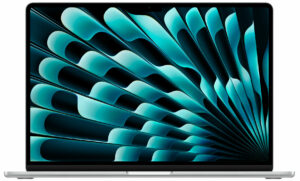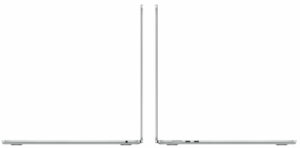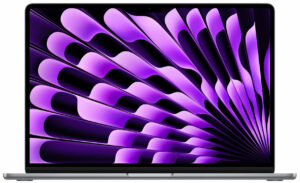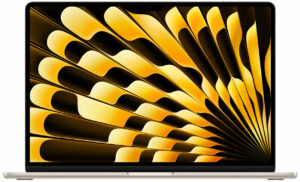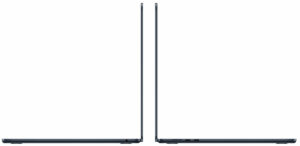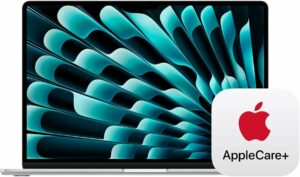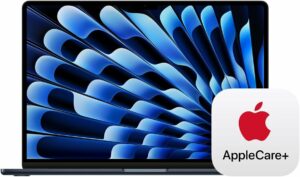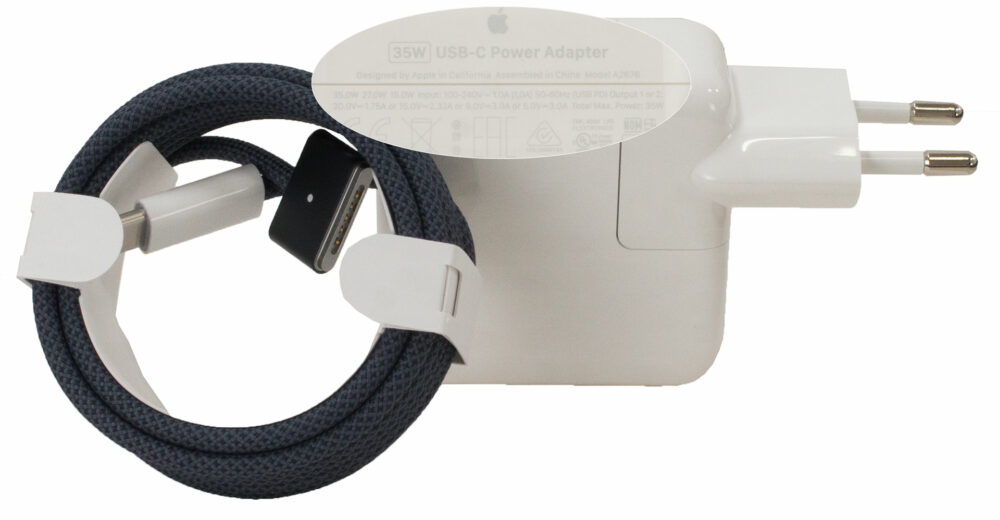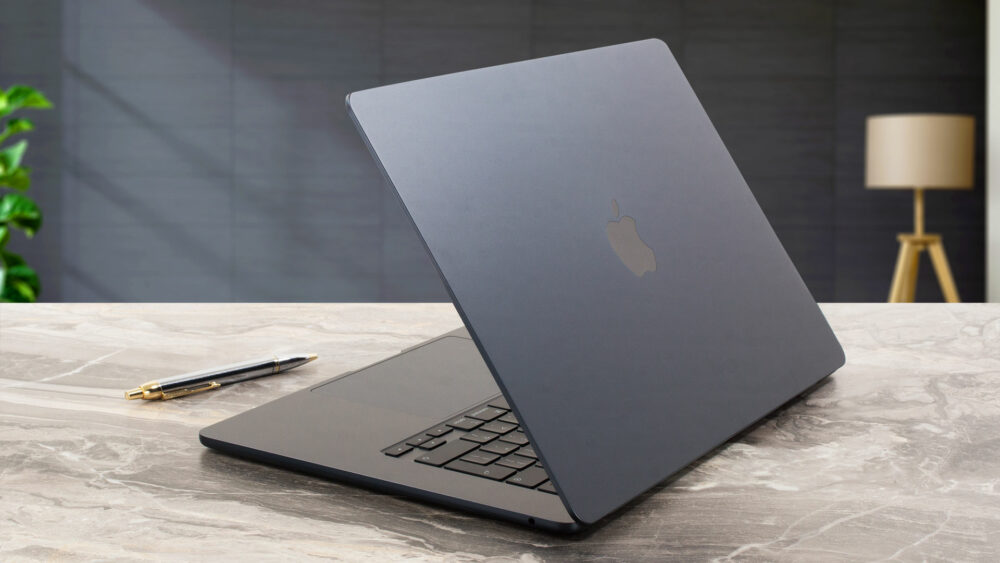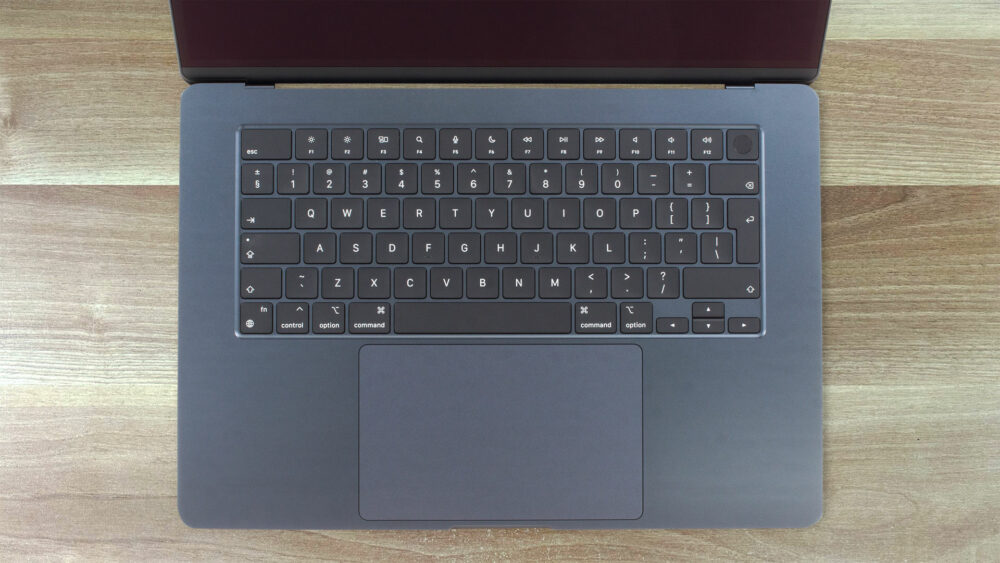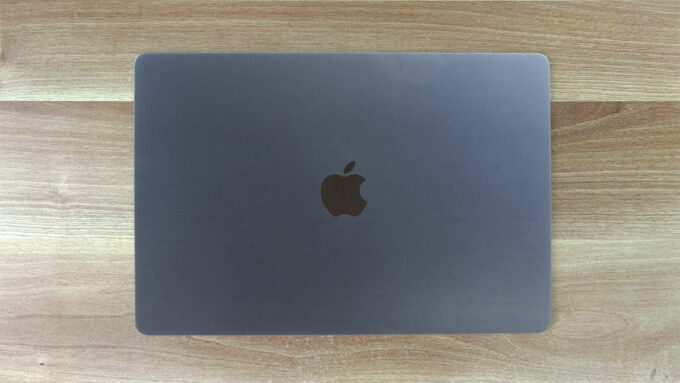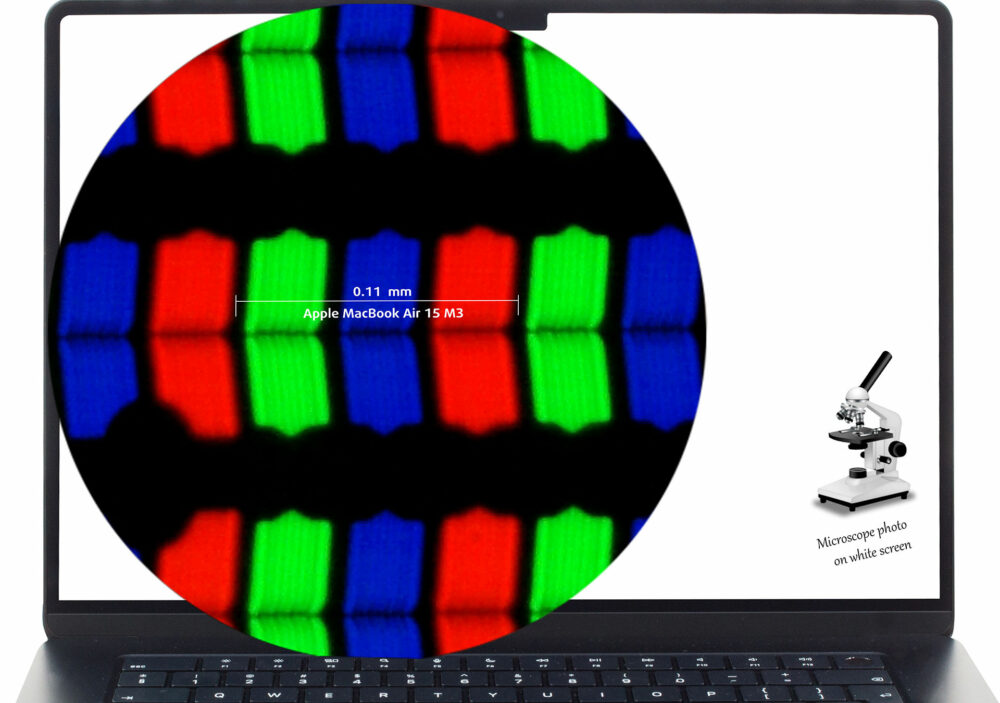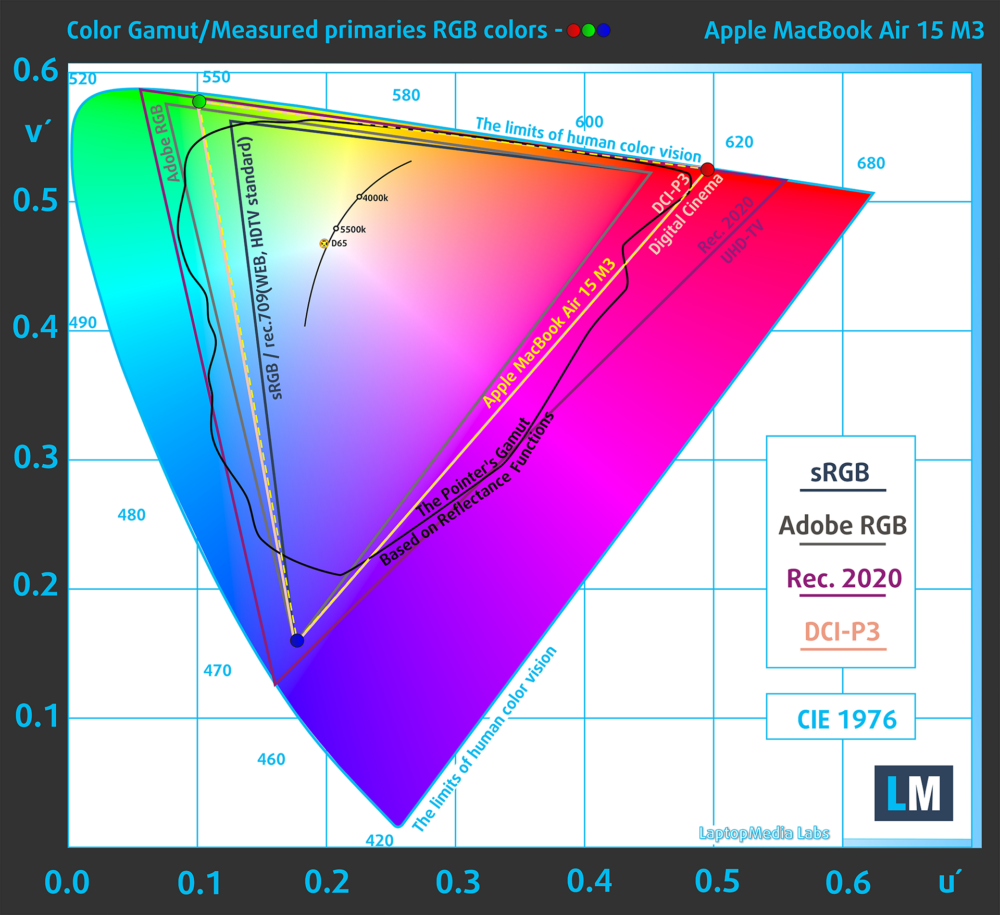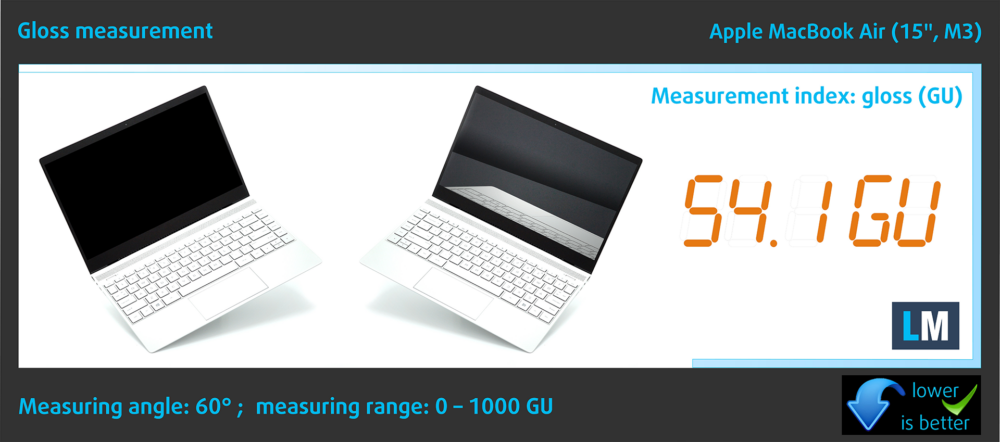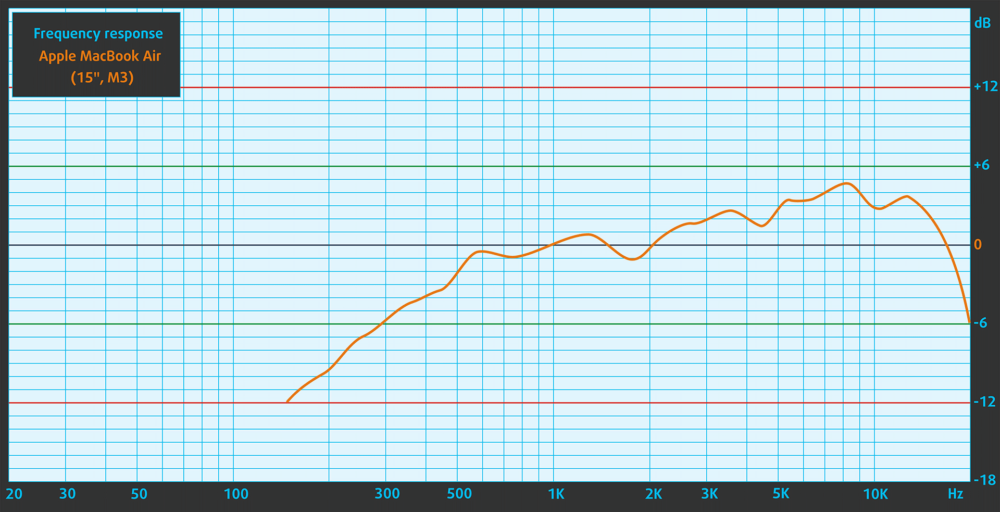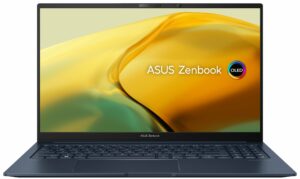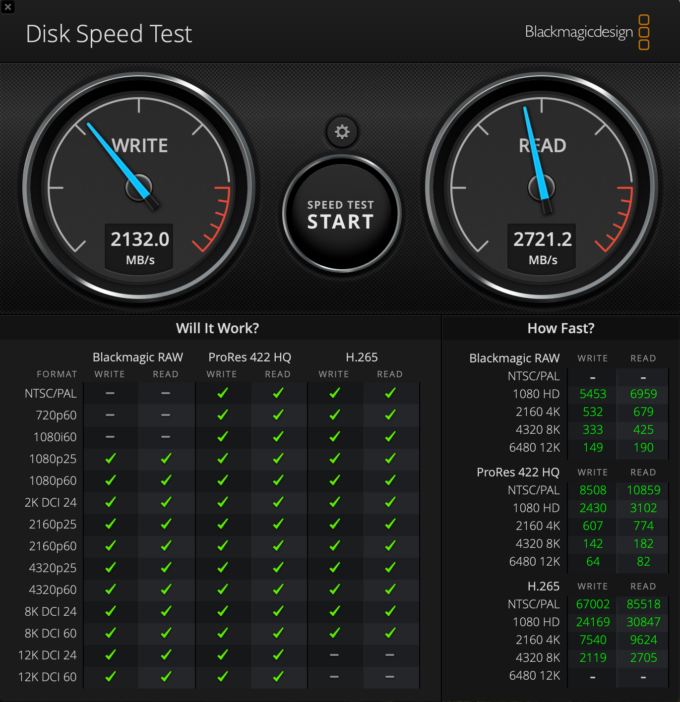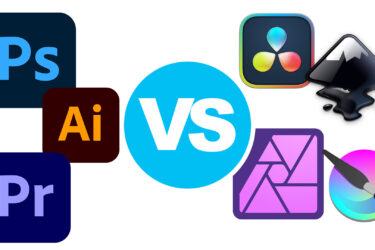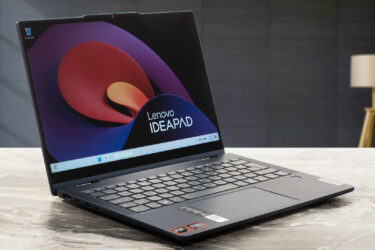Apple MacBook Air (15″, M3) review – Big Screen Power in a Thin and Light Package
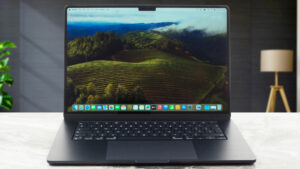 The Apple MacBook Air (15″, M3) is very similar to the 13-inch model. The main difference is the larger screen, the more powerful six-speaker sound system, and the bigger battery. The 15.3″ “Liquid Retina display” is one of the best in this price class, especially considering how bright and color-accurate this panel is. This laptop isn’t offered with an 8-core GPU so you can rely on the snapy M3 SoC combined with a 10-core integrated graphics card. Don’t expect miracles, this is an Apple laptop – the memory and the SSD are soldered.
The Apple MacBook Air (15″, M3) is very similar to the 13-inch model. The main difference is the larger screen, the more powerful six-speaker sound system, and the bigger battery. The 15.3″ “Liquid Retina display” is one of the best in this price class, especially considering how bright and color-accurate this panel is. This laptop isn’t offered with an 8-core GPU so you can rely on the snapy M3 SoC combined with a 10-core integrated graphics card. Don’t expect miracles, this is an Apple laptop – the memory and the SSD are soldered.
This machine has a passive cooling. The absence of a fan has its good side – no noise during load. On the other hand, we saw that the CPU of the smaller 13-inch iteration drops the P-core clock below the 2.50GHz mark in longer stress, and the temperatures are always on the high side. Here, the main body is bigger so it’ll be interesting to see if that has a positive impact on the CPU performance when the chip has to do the heavy lifting for longer periods.
Aside from the bigger display, this notebook is impressively thin which can be one of its main key selling points. The rest of the specs are almost identical to the smaller 13-incher – Wi-Fi 6E and a 16-core Neural Engine for AI tasks such as getting rid of background noise in your favorite videos.
You can check the prices and configurations in our Specs System: https://laptopmedia.com/series/apple-macbook-air-15-early-2024/
Contents
Specs, What’s in the box
- HDD/SSD
- up to 2000GB SSD
- RAM
- up to 24GB
- OS
- macOS
- Battery
- 66.5Wh
- Body material
- Aluminum
- Dimensions
- 340.4 x 237.6 x 11.5 mm (13.40" x 9.35" x 0.45")
- Weight
- 1.51 kg (3.3 lbs)
- Ports and connectivity
- 2x USB Type-C
- 4.0, Thunderbolt 3, Power Delivery (PD), DisplayPort
- Card reader
- Ethernet LAN
- Wi-Fi
- Wi-Fi 6E
- Bluetooth
- 5.3
- Audio jack
- 3.5mm Combo Jack
- Features
- Fingerprint reader
- optional
- Web camera
- 1080p FaceTime HD camera with Advanced image signal processor with computational video
- Backlit keyboard
- Microphone
- Three-mic array with directional beamforming, Dolby Atmos
- Speakers
- 6x Surround Speakers with support for Spatial Audio
- Optical drive
- Security Lock slot
All Apple MacBook Air 15 (Early 2024) configurations
What’s in the box?
Inside the box, we found the laptop itself, Apple stickers, some manuals, a 2-meter USB-C to MagSafe 3 Cable, and a 35W Dual USB-C Port Compact Power Adapter. If fast charging matters for you, there is an optional 70W USB-C charger that supports this tech.
Design and construction
The design of the Apple MacBook Air (15″, M3) isn’t that different compared to the 13″ model. So, you get a bigger laptop with a boxy shape with rounded corners. The solid aluminum build is great and feels premium to the touch. Apple states that the anodized surface of the Midnight color option heavily reduces the visible fingerprints on the chassis. Well, after a day of usage, we can spot some smudges here and there but nothing serious.
You can open the lid with a single hand. The hinge stiffness seems spot on. The “lip” on the center of the base helps to grip properly the lid before opening the machine. However, this section has two very sharp side corners. The top section of the whole base is also sharp-edged which could cause slight pain or soreness in your palms (depending on your position during work). Now it’s time for some good news. This device is minimally thicker than the 13-inch model – 11.5 mm. Wow, that’s a great profile height for a machine with a 15.3″ display! The weight is more than good for such a laptop – 1.51 kg.
The bezels around the bright IPS panel are as thin as possible. The display notch houses a 1080p FaceTime HD camera.
If you want to open the device wider than 135 degrees, you’ll be disappointed.
The keyboard seems the same as the one in the 13-inch iteration. That’s actually good because the backlight is impressively even and the board is comfortable for work thanks to the good key travel and the clicky feedback. Of course, the Touch-ID fingerprint reader is here as well. The touchpad is huge! It’s also super smooth and offers mind-blowing accuracy.
The bottom plate looks neat – just four rubber feet on it.
Ports
On the left side, we can spot the MagSafe 3 charging port and two 40 Gbps Thunderbolt 3 / USB 4 ports with DisplayPort (for up to 6k@60Hz external displays) and Power Delivery functionality. On the right side, there is only one Audio jack.
Display and Sound Quality
The Apple MacBook Air (15″, M3) has an IPS panel called „Liquid Retina display“. Its diagonal is 15.3″ (38.9 cm), and the resolution – 2880 х 1864. Additionally, the screen ratio is 14:9, the pixel density – 224 ppi, and their pitch – 0.11 x 0.11 mm. The screen can be considered Retina when viewed from at least 39 cm (above this distance, the average human eye can’t see the individual pixels).
Viewing Angles
Viewing angles are great. We offer images from different angles to evaluate the quality.
Also, a video with locked focus and exposure.
Brightness and Contrast
The maximum measured brightness is 507 nits (cd/m2) in the middle of the screen and 498 nits (cd/m2) average across the surface with a maximum deviation of just 6%. The Correlated Color Temperature on a white screen and at maximum brightness is 6680K („True Tone“ Off „Colour LCD“ Profile).
In the illustration below you can see how the display performs from a uniformity perspective. The illustration below shows how matters are for operational brightness levels (approximately 140 nits) – in this particular case at 50% Brightness (White level = 143 cd/m2, Black level = 0.1 cd/m2).
Values of dE2000 over 4.0 should not occur, and this parameter is one of the first you should check if you intend to use the laptop for color-sensitive work (a maximum tolerance of 2.0 ). The contrast ratio is good – 1360:1.
Color Coverage
Here’s an illustration (Fig. 1). The whole “sail-shaped” map below consists of all the colors we can see, while the black crooked line shows all the colors from real-world scenes and nature around us.
Then, we’ve drawn some of the most important and interesting color spaces, compared to the colors the panel of Apple MacBook Air (15″, M3) can show:
Standard/For Web: sRGB – widely used color space for most consumer devices, ideal for Web design and development
For Print: AdobeRGB – used in professional photo editing, graphic design, and print
For Photographers/Video Editors: DCI-P3 – used in high-end film production, post-production, and digital cinema
Premium HDR: Rec.2020 – the widest consumer ITU color standard, covering a massive 75.8% of the visible spectrum, a benchmark for premium HDR content
Apple MacBook Air (15″, M3): the yellow dashed triangle (– – – – – –) represents the range of colors this monitor can display. In our tests, we calculated the total color coverage of the monitor at 100% of the sRGB color gamut and 100% of the DCI-P3 color gamut.
(Fig.1) Apple MacBook Air (15″, M3) covers 100% of both the Web (sRGB) and DCI-P3 colors
Color Accuracy
The Apple MacBook Air (15″, M3) emulates sRGB color space. We tested the accuracy of the display with 24 commonly used colors like light and dark human skin, blue sky, green grass, orange, etc. The accurate factory settings will ensure adequate colors when displaying web content.
Response time (Gaming capabilities)
We test the reaction time of the pixels with the usual “black-to-white” and “white-to-black” method from 10% to 90% and vice versa.
We recorded Fall Time + Rise Time = 26 ms.
After that, we test the reaction time of the pixels with the usual “Gray-to-Gray” method from 50% White to 80% White and vice versa between 10% and 90% of the amplitude.
Health Impact: PWM (Screen flickering)
Pulse-width modulation (PWM) is an easy way to control monitor brightness. When you lower the brightness, the light intensity of the backlight is not lowered, but instead turned off and on by the electronics with a frequency indistinguishable to the human eye.
In these light impulses, the light/no-light time ratio varies, while brightness remains unchanged, which is harmful to your eyes. You can read more about that in our dedicated article on PWM.
Apple MacBook Air (15″, M3) display doesn’t flicker at any brightness level. This makes the screen pretty comfortable for long periods of use.
Health Impact: Gloss-level measurement
Glossy-coated displays are sometimes inconvenient in high ambient light conditions. We show the level of reflection on the screen for the respective laptop when the display is turned off and the measurement angle is 60° (in this case, the result is 54.1 GU).
Sound
Apple MacBook Air (15″, M3)’s speakers produce a sound of a very good quality. Moreover, its low, mid, and high tones are clear of deviations.
Performance: CPU, GPU, Storage
CPU performance
The 15-inch and 13-inch MacBook Air are almost identical in terms of CPU performance, while the MacBook Pro has a bit of an advantage, thanks to the fan in its cooling system.
Results are from the Cinebench R23 CPU test (the higher the score, the better)
In Geekbench, the M3 models are about 20% faster than M2 in both Single and Multi-Core tests.
| Laptop Model | Geekbench 6: Single / Multi score |
|---|---|
| Apple MacBook Pro (14″, M3) | 3181 / 12055 |
| Apple MacBook Air (13″, M3) | 3135 / 12042 |
| Apple MacBook Air (15″, M3) | 3069 / 11976 |
| Apple MacBook Air (15″, M2) | 2631 / 10087 |
GPU performance
All M3-based Macbooks have similar GPU scores too, more than 2 times faster than the popular Intel Iris Xe Graphics G7 (96EU) integrated graphics.
Results are from the 3DMark: Wild Life benchmark (higher the score, the better)
| GPU Benchmarks | GFXBench Manhattan 3.0 (1080p offscreen) | GFXBench Manhattan 3.1 (1080p offscreen) | GFXBench Aztec Ruins OpenGL (1080p offscreen) | GeekBench 5 Compute OpenCL | GeekBench 5 Compute Metal | GeekBench 6 Compute OpenCL | GeekBench 6 Compute Metal |
|---|---|---|---|---|---|---|---|
| Apple MacBook Air (15″, M3) | 524 fps | 373 fps | 331 fps | – | – | 30566 | 47354 |
| Apple MacBook Air (13″, M3) | 530 fps | 367 fps | 331 fps | – | – | 30546 | 47782 |
| Apple MacBook Pro 14 (М3, Late 2023) | 561 fps | 390 fps | 321 fps | – | – | – | – |
| Apple MacBook Air 15 (M2, Mid-2023) | 533 fps | 370 fps | 289 fps | 27856 (Geekbench 6) | 46025 (Geekbench 6) | – | – |
| Apple MacBook Air (M2, 2022) | 478 fps | 319 fps | 247 fps | 23824 | 26182 | – | – |
| Apple MacBook Pro 13 (M2, 2022) | 552 fps | 370 fps | 296 fps | 35262 | 38692 | – | – |
| Apple MacBook Pro 14 (M1 Pro, 8C/14C) | 818 fps | 496 fps | 394 fps | 35262 | 38692 | – | – |
| Apple MacBook Air (M1) | 404 fps | 273 fps | 214 fps | – | – | – | – |
| Apple MacBook Pro 13 (M1) | 407 fps | 274 fps | 215 fps | – | – | – | – |
Storage
The 256GB SSD of this laptop reaches a writing speed of ~2132 MB/s and ~2721 MB/s during reading. Nothing impressive. Still, you can opt for 512GB, 1TB, or 2TB NVMe drives which are faster but more expensive.
Temperatures and comfort, Battery Life
Max CPU load
In this test we use 100% on the CPU cores, monitoring their frequencies and chip temperature. The first column shows a computer’s reaction to a short load (2-10 seconds), the second column simulates a serious task (between 15 and 30 seconds), and the third column is a good indicator of how good the laptop is for long loads such as video rendering.
Average P-core frequency; Average E-core frequency; CPU temp.; Package Power
| Apple M3 | 0:02 – 0:10 sec | 0:15 – 0:30 sec | 10:00 – 15:00 min |
|---|---|---|---|
| Apple MacBook Air (15″, M3) | 3.56 GHz @ 2.75 GHz @ 106°C @ 20.53W | 3.47 GHz @ 2.75 GHz @ 107°C @ 18.43W | 2.80 GHz @ 2.75 GHz @ 100°C @ 11.42W |
| Apple MacBook Air (13″, M3) | 3.64 GHz @ 2.75 GHz @ 98°C @ 19.89W | 3.45 GHz @ 2.75 GHz @ 107°C @ 17.27W | 2.44 GHz @ 2.75 GHz @ 91°C @ 8.88W |
| Apple MacBook Pro 14 (М3, Late 2023) | 3.64 GHz @ 2.75 GHz @ 84°C @ 20.34W | 3.64 GHz @ 2.75 GHz @ 98°C @ 20.61W | 3.64 GHz @ 2.75 GHz @ 100°C @ 21.12W |
Just like the 13-inch version, the Apple MacBook Air (15″, M3) has a passive cooling solution. The frequencies in short and medium loads are almost similar compared to smaller siblings. In prolonged periods of max CPU stress, the 15-incher has the upper hand when it comes to the P-core clock. That’s normal given the bigger chassis which is a better option in terms of heat dissipation.
Also, as you see, if you’re looking for a Macbook for tasks like Video editing, the Pro variant is a much better choice.
Stability (Cinebench R23 30-min test)
This is easily seen in the Cinebench stability test as well, where Pro 14 is 25% better than MacBook Air 13, and 17% better than Air 15.
| Apple M3 | First run | Average Score |
|---|---|---|
| Apple MacBook Air (15″, M3) | 10121 | 8441 |
| Apple MacBook Air (13″, M3) | 10871 | 7864 |
| Apple MacBook Pro 14 (М3, Late 2023) | 10471 | 9890 |
Comfort during full load
This laptop offers good comfort even under full CPU loads. There is zero noise and the keyboard feels warm in the center and its upper part as well. Still, these sections don’t feel too warm so you can use the laptop for normal work even if the processor is pushed to its limits.
Battery
We conduct the battery tests with the screen brightness adjusted to 120 nits and all other programs turned off except for the one we are testing the notebook with. The battery is a 66.5Wh unit, which lasts for around 20 hours of Web browsing or almost 17 hours of video playback. The result is superb!
To achieve that, you have to apply the “Low Power Mode” and turn off the “Slightly dim the display on battery” option.
In order to simulate real-life conditions, we used our own script for automatic web browsing through over 70 websites.
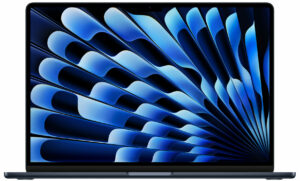

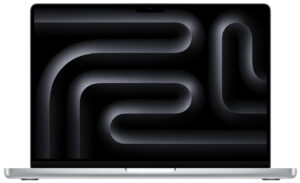
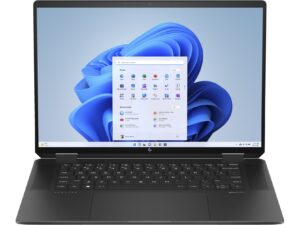

For every test like this, we use the same video in HD.





Disassembly, upgrade options and maintenance
Have a look at our disassembly of the 13-inch version of this machine. The whole process applies to the 15-inch device as well.
Verdict
 Well, folks, most of the things that we said about the 13-inch model also apply to the Apple MacBook Air (15″, M3) in front of us. This machine is super thin for a 15-incher, and the weight is low as well. Just like most Apple machines, the design is clean and modern. No complaints regarding the build quality, the aluminum chassis is solid. The keyboard with its good key travel and clicky feedback is great for usage and the same can be said for the sizable and smooth touchpad.
Well, folks, most of the things that we said about the 13-inch model also apply to the Apple MacBook Air (15″, M3) in front of us. This machine is super thin for a 15-incher, and the weight is low as well. Just like most Apple machines, the design is clean and modern. No complaints regarding the build quality, the aluminum chassis is solid. The keyboard with its good key travel and clicky feedback is great for usage and the same can be said for the sizable and smooth touchpad.
Pick your configuration carefully because the memory and the SSD are soldered. Here, even the base configuration features 16GB of unified memory which should be enough for most people. If you plan to use this laptop until it gets obsolete in terms of hardware power, the 24GB RAM configuration isn’t a bad idea if money isn’t a problem. The base 256GB NVMe seems too small for the modern-day user but if you own an external HDD or SSD for backup, maybe the default SSD option could be enough for your needs.
There is no noise during heavy loads and the keyboard doesn’t get too hot which is good considering the fanless cooling solution. Speaking of which, the latter is doing a good job in short and medium long tasks. In long loads, the E-core clock is rock-solid, while the performance cores frequency is reduced to 2.80 GHz. That’s a 360Mhz higher clock compared to the score of the 13-ich machine. Not bad.
The 15.3″ inch IPS display impresses with high maximum brightness, full sRGB / DCI-P3 coverage, and good color accuracy. When you add the long battery life in the mix, the Apple MacBook Air (15″, M3) is a great choice for people who own an M1-based device and need something more powerful alongside PWM-free display, comfortable input devices, and fantastic build quality.
You can check the prices and configurations in our Specs System: https://laptopmedia.com/series/apple-macbook-air-15-early-2024/
Pros
- Fanless cooling – no noise
- Bright PWM-free high-res display
- Full sRGB and DCI-P3 coverage
- Supports Wi-Fi 6E + Bluetooth 5.3
- Good overall performance, particularly in short and medium loads
- Strong metal chassis
- Great battery life
- Great sound quality thanks to the six-speaker sound system
- Mag Safe charging port
- The CPU can sustain higher P-core frequency in long stress than the 13″ iteration
Cons
- The port selection is the same as the 13-inch model
- Pricey
- Soldered memory and NVMe
- High processor temperatures under any kind of stress
- Notably decreased P-core clock in long loads
